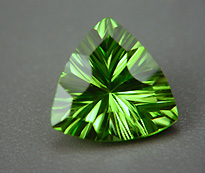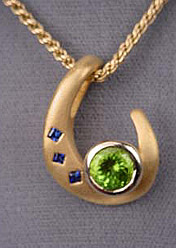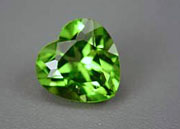



To my mind, peridot is an under-appreciated gemstone. Perhaps this has become the case due to the public's familiarity with low quality, olivey material which is inadequately cut and polished. Admittedly it can look pretty awful, but the lime and apple green stones given custom cuts and polishes are something else again.




Peridot belongs to the forsterite-fayalite mineral series which is part of the olivine group. It is one of the "idiochromatic" gems, meaning that its color comes from the basic chemical composition of the mineral itself, not from minor impurities, and therefore it will only be found in shades of green. Historically important sources in Egypt have been superceded by today's main sources in Arizona and Pakistan and, most recently, China.
The high birefingence of this gemstone necessitates careful orientation in cutting to prevent "fuzziness" of facet reflections through the table. Distinctive, disk-like liquid and gas "lily pad" inclusions can often be seen under magnificatiion.
Peridot is one of the gems which can be assumed to be unenhanced and which is hard and tough enough for most jewelry uses, although use in rings without protective mountings should be limited to occasional wear pieces. Peridot is the birthstone for the month of August.
The vast majority of peridot rough produces sub-carat sized stones which are ubiquitous in commercial quality jewelry and are quite inexpensive. Stones in the 1-4 carat range that have custom cuts and lack olive tones are much more highly valued and stones over 4 carats with good clarity, cut and color bring the highest prices of all.